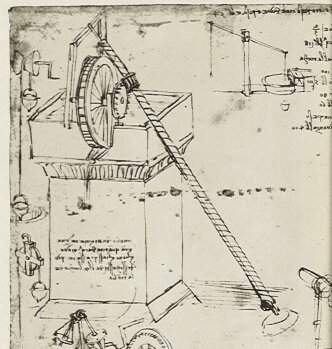Self-Acting Pumps
 |
We see many examples through the centuries. The fact that none of them ever worked seemed not to deter inventors. What principle seduces them? I call it the "dog chasing its tail" principle.
We show a gallery of examples:
|
The concepts of force, energy and momentum were not refined until the early 19th century. Leonardo's thinking about these matters was still largely Aristotelian.
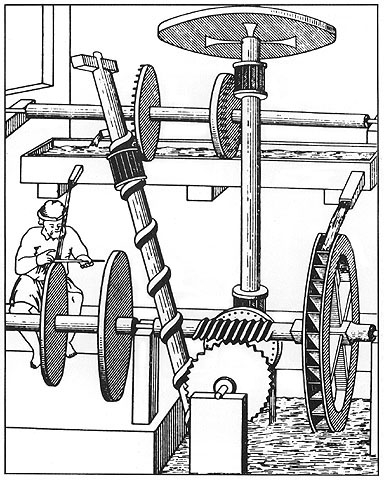
This version also uses an Archimedian screw to lift the water. It dates from 1580.
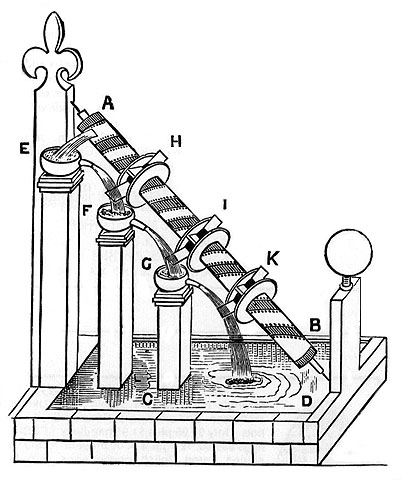
The Archimedian screw again. This design is from Mathematical Magick by Bishop Wilkins (1648). He gave this as an example of how "perpetual motion may seem easily contrivable." He admits that perhaps the weight of the water might not be enough to lift the water, so "...if the water falling upon one wheel, would not be forcible enough for this effect, why then there might be two, or three, or more, according as the length and elevation of the instrument will admit; by which means the weight of it may be so multiplied in the fall that it shall be equivalent to twice or three the quantity of water which ascends; as may be more plainly discerned by the ... diagram." At least he had put some serious mathematical thought to this.
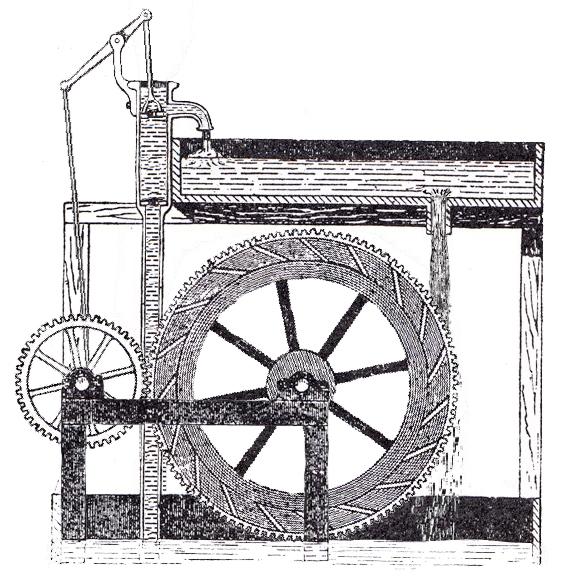
A lift pump is driven by the wheel. Probably 19th century.
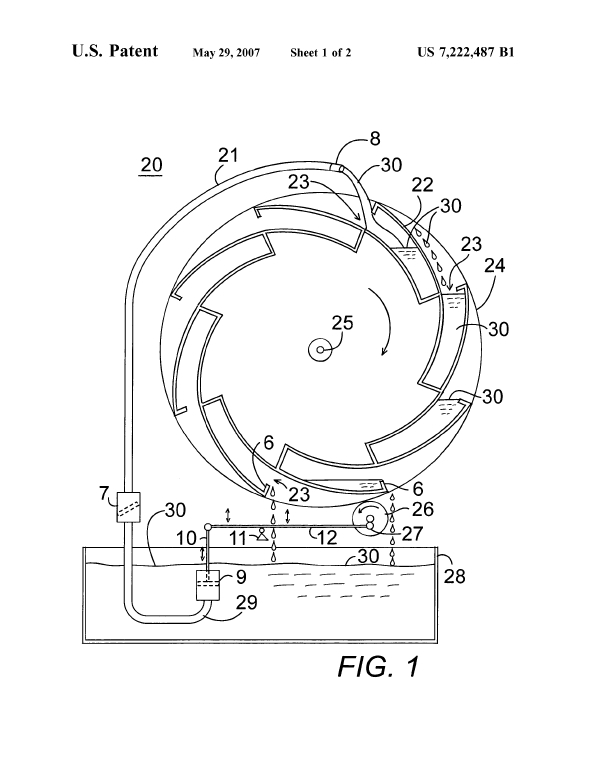
This last example shows conclusively that dumb ideas never die, and that they can even get patented in the 21st century (note the date). Now the patent office says that it doesn't guarantee that a patented device actually works, but only that it be 1) a new idea, not patented or seen before, 2) not obvious from 'prior art' and 3) useful. This one fails to meet any of these criteria. See the entire patent: Portable electricity generating gravity driven wheel system issued to William G. Hinkley, N.J. on May 29, 2007. The inventor claims that a generator can be attached to the wheel to produce electricity.
Running parallel to these water lifting devices were similar designs using the same principle, lifting sand or metal balls perpetually. Which came first? We don't know.
Return to top.
Return to the Museum's main gallery.
Return to Donald Simanek's front page.
